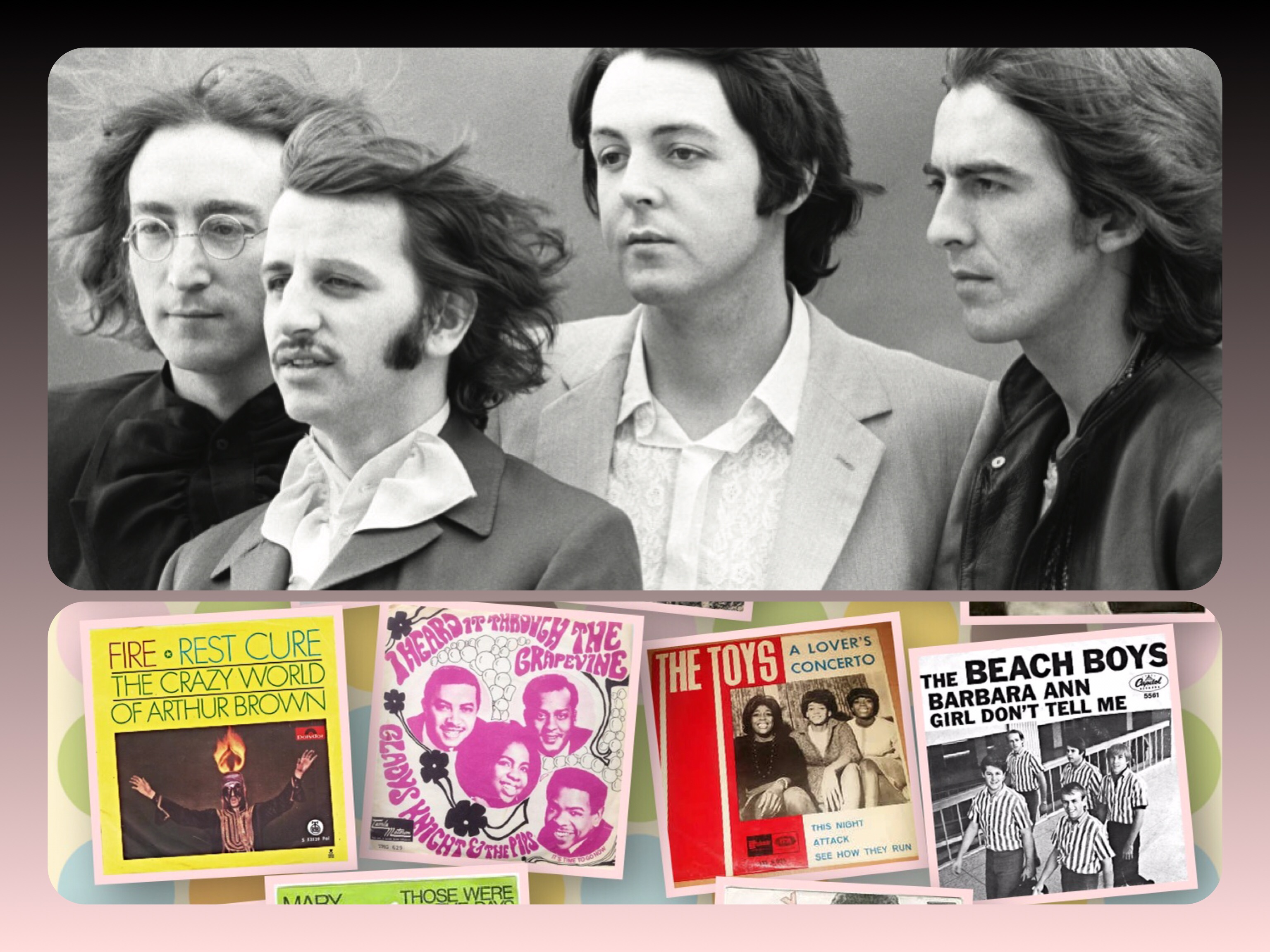(May 13, 2019). Everyone who knows anything about the Beatles knows that they hold the record for having the most No. 1 songs in American chart history with 20.
Their most ardent fans – or Billboard chart geeks in general – can cite each and every one of those twenty Hot 100 No. 1 songs, maybe even in chronological order.
But few people talk about or even recall the unfortunate artists and songs the Beatles prevented from hitting No. 1 during their phenomenal chart run, the tunes that forever languished as runners-up because they couldn’t overcome hits by the biggest band of all time.

Heck, before now, you probably never even cared. But now that I’ve put the thought in your head, you’re gonna want to read on to see just who and what those luckless artists and songs were.
To be accurate, not every No. 2 on a chart where the Beatles were No. 1 was so unfortunate. Some of them eventually made it to the top – or had been No. 1 already before the Beatles took over. That nuance explains why there are only 14 songs that earned the dubious distinction of being prevented from hitting the pinnacle while the Beatles racked up 20 No. 1 singles during their six-and-a-half year chart reign.
Djrobblog pays tribute to all 14 of those songs in this first article in a series focusing on the No. 2 position. These 14 hits span the Beatles’ entire chart-topping period, from their first No. 1 “I Want To Hold Your Hand” in 1964 to their last “The Long And Winding Road” in 1970.
The No. 2 songs are listed in chronological order, with the Beatles song that prevented them from reaching the top in parentheses for each entry. There are even a couple of Beatles “twists” to this story, which you’ll see as you continue reading.
And that’s it music fans – djrobblog’s tribute to the No. 2 hits that had the misfortune of going against the most popular band of all time.
But that’s not the end of the story involving The Beatles and No. 2.
The Beatles weren’t always the victor in two-song battles for the top spot. In a case of turnabout being fair play, twice their songs were relegated to No. 2 peaks by other artists (in addition to the time they held themselves at bay in 1964 when “Twist and Shout” was blocked by “Can’t Buy Me Love.”). That rare second-place status was dealt to them by two acts who factor pretty heavily in the Beatles-era history:
- “Do You Want To Know A Secret” (blocked by Louis Armstrong’s “Hello Dolly”). As Beatles fans know, it was Louis Armstrong’s “Hello Dolly” that finally ended the Beatles’ 14-week reign atop the Hot 100 in May 1964. During its reign, “Dolly” held the Beatles’ “Do You Want To Know A Secret” to the runner-up slot, making it the second such Beatles record after “Twist and Shout” a few weeks earlier.
- “Yellow Submarine” (blocked by the Supremes’ “You Can’t Hurry Love”). While the Beatles were making their record-breaking 20 No. 1 hits, the Supremes were the group with the second-most Hot 100 chart-toppers with twelve. One of them, 1966’s “You Can’t Hurry Love,” got the better of the Beatles when it held their “Yellow Submarine.” The Beatles and the Supremes clashed several times at the top of the charts, but this was the only instance in which one of the act’s singles held the other to a No. 2 peak.
You can hear all fourteen of the No. 2 songs blocked by the Beatles in this special Spotify playlist.
DJRob
DJRob is a freelance blogger who covers R&B, hip-hop, pop and rock genres – plus lots of music news and current stuff! You can follow him on Twitter @djrobblog.
You can also register for free to receive notifications of future articles by visiting the home page (scroll up!).



Actually, in the case of Yellow Submarine, it was the Beatles who kept it from going to number one. The flip side of Yellow Submarine was Eleanor Rigby which went to number 11 on Billboard, and siphoned off ranking points from Submarine. In those days, Billboard ranked both sides of a 45, and essentially put them in competition with each other. A few years later, they would add the two sides together, and give the 45 just one ranking. Had they done this in 1966, Yellow Submarine/Eleanor Rigby would have been number one.
Great insight, thanks. I guess Billboard giveth and Billboard taketh away. That change you mentioned, btw, is how “Come Together”/“Something” made it to No. 1 in 1969.
I love reading this stuff! What’s amazing to me is realizing how close Roy Head, the Toys, the Cyrkle and Mercy — all of whose songs don’t sound like “Number One material” (whatever that is, I know) — came to claming the top spot.
Great job, DJ Rob!
You’re absolutely right about those four songs! I had no idea “A Lover’s Concerto” was a No. 2 song – and had never even heard “Treat Her Right” before I researched this! Oh, but for those damn Beatles! Lol. Thanks, Todd!
Great post! Never realized how close they came to total chart domination and what songs kept them from the top at times.
There weren’t many who succeeded.